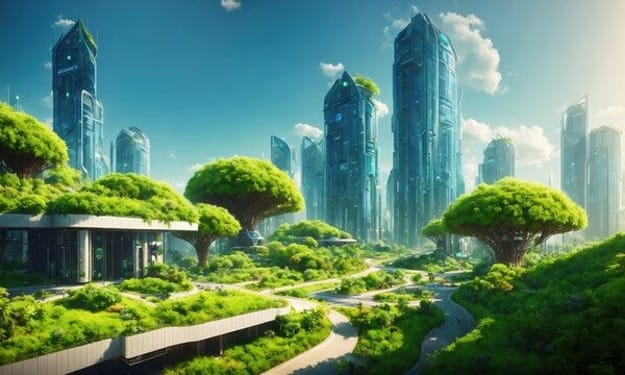THE PLANETS
What Were The Planets Like 3.8 Billion Years Ago?

What was the state of all the planets 3.8 billion years ago?
Have you ever pondered over the appearance of our solar system in the past? Were the planets identical to their present form or did they exhibit a completely different appearance?
In this video, we shall delve into the past to comprehend the appearance of the planets 3.8 billion years ago.
Why did we choose this particular date? The reason being that during this time, the solar system was concluding a phase known as the "Late Heavy Bombardment Period." This period occurred between 4.1 and 3.8 billion years ago, during which there were numerous asteroid impacts with the planets and objects within the Solar System. Although this period was relatively brief in the cosmic scale, it had a significant impact on the planets.
We usually commence with the planets closest to the solar system, but in this case, we shall make an exception since the gas giants have not undergone significant changes in their history. The reason being that they lack a solid surface, and during the "Late Intense Bombardment Period," Jupiter, Saturn, Uranus, and Neptune experienced numerous asteroid impacts. However, these impacts sank into their clouds, and therefore their appearance remained unchanged.
Some astronomers believe that Jupiter and Saturn underwent a slight color change since the minerals deposited by the asteroids could alter the coloration of their clouds. This was deduced from the impact of comet Shoemaker-Leavy 9, which fell on Jupiter in 1993. This comet deposited vast amounts of material on the surface of Jupiter, creating a powerful dark vortex on the planet, which slightly altered the composition of its clouds.
However, it is highly likely that the gaseous planets appeared identical to their present form, except for their moons. It is probable that in the remote past, the gas giants did not have as many moons as they do now. For instance, Neptune and its largest moon Triton were not initially part of the planet, and the gravity of the icy giant captured this moon.
Moving on to the rocky planets, they were entirely different. Mercury, for instance, resembled a firepit after the Late Heavy Bombardment Period ended. Analyses by the Messenger probe have revealed that the surface of Mercury, like that of the Moon, has numerous meteorite impacts ranging from a few meters to thousands of kilometers.
Venus, the hottest planet of all, where sulfuric acid rains and temperatures exceed 480 C °, was not always the hell it is today. In fact, all analyses indicate that billions of years ago, Venus was quite similar to Earth. After the meteorite bombardment period, several comets fell on rocky planets, including Venus. When these comets fell on the planets billions of years ago, the ice melted and turned into water. If the planet had enough gravity and an atmosphere, that water could stay and become oceans, lakes, and rivers.
Earth has not always been our beautiful and peaceful blue home with oceans and forests full of abundant life forms. 3.8 billion years ago, after the late bombardment period, the Earth looked very different. At that time, our planet was at the beginning of the archaic period, and there was an evolution of the Earth's crust, so there had to be plate tectonics and an internal terrestrial structure similar to the one we know today.
Scientists believe that Mars looked a lot like Earth in the past because, after the late bombardment period, like Venus and Earth, Mars also received the impact of several comets that filled it with water.
Throughout history, the planets have undergone significant changes that led them to be what they are today. However, thanks to this, a planet succeeded and managed to obtain the necessary conditions to house living beings. If we have learned anything by studying the past, it is to understand what the future will be like. Today, we know that the Earth and the rest of the planets continue to evolve, and our planet will not be forever the hospitable home it is today. Therefore, we must take care of it and protect it until we find a new home on some other planet in the universe.






Comments
There are no comments for this story
Be the first to respond and start the conversation.